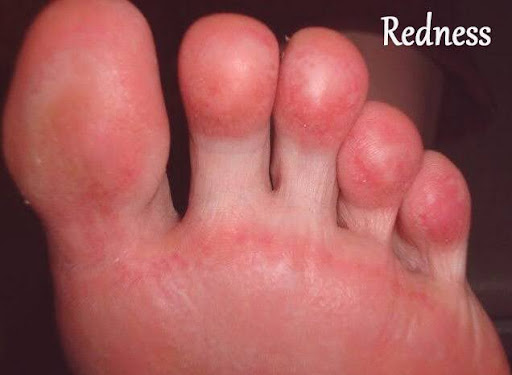Early stages of diabetic foot ulcers can often go unnoticed, but recognizing the early stages diabetic foot ulcer symptoms is crucial for preventing serious complications. For individuals with diabetes, maintaining foot health is vital. Poor circulation and nerve damage can lead to the development of ulcers that can quickly worsen if left untreated.
For many with diabetes, this seemingly minor issue can be the beginning of a much larger problem. Early stages diabetic foot ulcer symptoms often include subtle changes such as redness, swelling, or areas of warmth on the skin. These signs are easy to overlook, especially when nerve damage has dulled the sensation in your feet.

Understanding the early stages of diabetic foot ulcers is crucial. Recognizing their symptoms empowers individuals. This awareness leads to timely medical advice. It helps implement effective foot care routines. Proper care prevents severe consequences. This awareness is the first step toward maintaining healthy feet and preventing serious health issues.
What is a Diabetic Foot Ulcer?
A diabetic foot ulcer is an open sore or wound that occurs on the foot of a person with diabetes. These ulcers typically develop on the bottom of the foot and are a common complication of poorly managed diabetes. They can result from a combination of factors including peripheral neuropathy (nerve damage), poor circulation, and high blood sugar levels.
Peripheral neuropathy causes a loss of sensation in the feet, making it difficult for individuals to notice injuries or pressure points. Poor circulation, another complication of diabetes, reduces blood flow to the feet, further hindering the healing process and increasing the risk of infection.
A diabetic foot ulcer can range from a shallow, red sore to a deep wound that exposes underlying tissues like tendons or bones. These ulcers can lead to severe infections, including cellulitis or osteomyelitis (bone infection) if left untreated. It also may ultimately result in gangrene and the need for amputation.
Early Stages Diabetic Foot Ulcer Symptom
Diabetic foot ulcers are a serious problem for people with diabetes. Recognizing the early symptoms can help prevent them from getting worse. Here are some key points to understand the early stages of diabetic foot ulcers.
Early Symptoms to Watch For
- Redness: Redness is one of the early stages diabetic foot ulcer symptoms. The first sign might be a red area on your foot. This redness can mean irritation or the beginning of an ulcer. Pay close attention to any changes in color.

2. Swelling: Swelling can occur around the area of a small injury. If you notice any unusual puffiness, it’s a sign to check further.
3. Warmth: A warm spot on your foot can indicate inflammation or infection. Feel your feet regularly to detect any areas that are warmer than the rest.
4. Pain or Discomfort: Although nerve damage can reduce feeling, some people still experience foot pain or discomfort. Any unusual sensation should be taken seriously.
5. Calluses or Blisters: Look for calluses or blisters that don’t heal quickly. These can turn into ulcers if ignored.

6. Dry or Cracked Skin: Dry skin that cracks can be an entry point for bacteria. Keep your skin moisturized to prevent this.
7. Drainage on Socks: Sometimes, early ulcers might leak fluid. Inspect your feet for wounds if you notice stains or wet spots on your socks.
Why Early Detection of Diabetic Foot Ulcer is Important
Early detection of diabetic foot ulcers is critical for several compelling reasons, which can significantly impact the overall health and well-being of individuals with diabetes. Recognizing and addressing these ulcers at their inception can prevent severe complications, promote faster healing, and enhance quality of life.
Preventing Severe Complications
Diabetic foot ulcers can quickly escalate if not detected early. Small, seemingly minor injuries can develop into deep, infected wounds due to poor blood circulation and reduced nerve sensation in diabetic feet.
Detecting the early stages diabetic foot ulcer symptoms allows for prompt treatment, which can prevent the ulcer from becoming infected or progressing to a stage where it might necessitate more drastic interventions, such as amputation.
By catching ulcers early, the risk of complications like gangrene, which can be life-threatening, is significantly reduced.
Promoting Faster Healing
The sooner early stages diabetic foot ulcer symptoms are identified and treated, the faster it can heal. Early stages of ulcers are typically less severe, making them easier and quicker to treat. Interventions might include cleaning the wound, using appropriate dressings, and possibly antibiotics to ward off infection.
Early treatment helps to reduce the duration of healing time, minimizes discomfort, and allows individuals to maintain their normal activities without prolonged disruptions.
Enhancing Quality of Life
Living with a diabetic foot ulcer can be painful and debilitating. Early detection and treatment prevent the ulcer from becoming a chronic issue that could lead to long-term disability. This proactive approach ensures that individuals with diabetes can continue to lead active and fulfilling lives without the constant worry of severe foot complications.

Regular foot inspections and recognizing the signs of early ulcers empower individuals to take charge of their health, fostering a sense of control and confidence in managing their condition.
Reducing Healthcare Costs
Addressing diabetic foot ulcers early also has economic benefits. Early treatment typically involves less intensive medical care compared to managing severe ulcers or performing surgeries. This not only saves healthcare costs but also reduces the financial burden on patients and their families.
What to Do If You Notice Symptoms
Recognizing the early stages diabetic foot ulcer symptoms is the first step toward effective management and prevention of serious complications. Here are the essential steps you should take if you notice any symptoms:
1. Inspect Your Feet Daily
- Regular Checks: Make it a habit to inspect your feet every day. Use a mirror to see the bottoms of your feet or ask someone to help.
- Look for Signs: Pay attention to redness, swelling, warmth, blisters, calluses, dry or cracked skin, and any unusual changes.
2. Keep the Ulcer Clean
- Gentle Washing: Clean the ulcer gently with mild soap and lukewarm water. Avoid scrubbing the area to prevent further damage.
- Drying: Pat the area dry with a clean towel. Ensure the ulcer and the surrounding skin are completely dry before applying any dressings.
3. Apply Medication
- Follow Medical Advice: Use any prescribed ointments or creams as directed by your healthcare provider. These medications can help fight infection and promote healing.
- Proper Application: Apply medication to the ulcer carefully to avoid spreading infection.
4. Dress the Wound
- Sterile Bandages: Cover the ulcer with a sterile bandage or dressing. This helps keep the area clean and protected from further injury.
- Change Dressings Regularly: Follow your doctor’s instructions on how often to change the dressings to maintain cleanliness and promote healing.

5. Reduce Pressure on the Ulcer
- Protective Footwear: Wear shoes that fit well and provide adequate support. Special footwear or orthotic devices may be recommended to relieve pressure on the ulcer.
- Avoid Walking Barefoot: Always wear shoes, even indoors, to protect your feet from injuries.
6. Manage Blood Sugar Levels
- Monitor Blood Sugar: Keep your blood sugar levels within the target range. High blood sugar can slow down the healing process.
- Follow Diabetes Management Plan: Stick to your prescribed diet, exercise, and medication regimen to maintain optimal blood sugar levels.
7. Improve Circulation
- Regular Exercise: Engage in exercises that improve blood flow to your feet. Consult your doctor for suitable activities.
- Avoid Smoking: Smoking can worsen circulation problems. Seek help to quit if necessary.
8. Seek Medical Attention
- Prompt Action: If you notice any symptoms of a diabetic foot ulcer, contact your healthcare provider immediately. Early medical intervention is crucial.
- Regular Check-Ups: Schedule regular appointments with your doctor to monitor your foot health and catch any issues early.
9. Maintain a Healthy Diet
- Nutrient-rich foods: Eat a balanced diet rich in vitamins and minerals to support overall health and healing.
- Stay Hydrated: Drink plenty of water to keep your body well-hydrated.
10. Watch for Signs of Infection
- Be Vigilant: Look for increased redness, swelling, warmth, pus, or a foul odor coming from the ulcer.
- Immediate Care: If you notice any signs of infection, seek medical attention right away.
Final Words
Taking care of your feet is crucial if you have diabetes. Detecting the early stages diabetic foot ulcer symptoms can prevent serious complications and keep you healthy. Always check your feet daily for any signs of trouble, like redness, swelling, or blisters. Keep your feet clean and dry, wear proper shoes, and manage your blood sugar levels.
If you notice any issues, see your doctor right away. By being proactive and attentive, you can avoid serious problems and maintain a good quality of life. Remember, your feet are important, so take care of them every day. Stay vigilant, stay healthy, and keep stepping forward with confidence!
Frequently Asked Questions
What are the early stages diabetic foot ulcer symptoms?
Early symptoms include redness, swelling, warmth, blisters, calluses, dry or cracked skin, and drainage on socks.
Why is early detection of diabetic foot ulcers important?
Early detection prevents infections, avoids severe complications like amputations, reduces healthcare costs, and maintains a better quality of life.
What should I do if I notice symptoms of a diabetic foot ulcer?
Inspect your feet daily, keep the ulcer clean, apply medication, dress the wound, reduce pressure, manage blood sugar, improve circulation, seek medical attention, maintain a healthy diet, and watch for infection signs.
How should I clean a diabetic foot ulcer?
Clean the ulcer with mild soap and lukewarm water, then pat it dry with a clean towel.
What types of dressings should be used on a diabetic foot ulcer?
Use sterile bandages or dressings as recommended by your healthcare provider, and change them regularly.
How can I reduce pressure on a diabetic foot ulcer?
Wear well-fitting, supportive shoes and use special footwear or orthotic devices. Avoid walking barefoot.
Why is managing blood sugar levels important for treating foot ulcers?
High blood sugar slows healing and increases infection risk. Keeping blood sugar in check aids ineffective treatment.

Leave a Reply